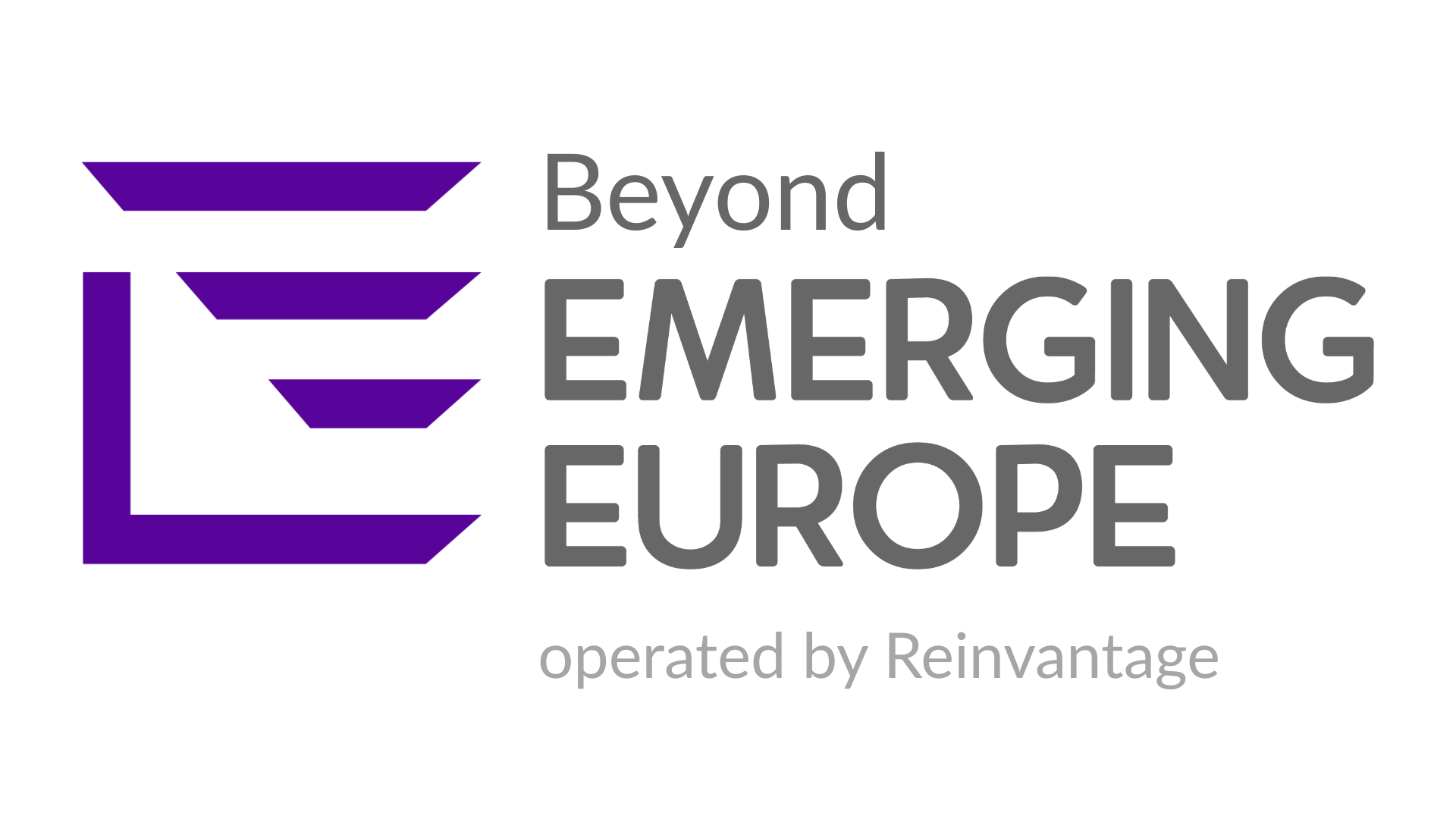In a region of Europe that has often wrestled with volatility, Czechia’s path to prosperity hinges on steady progress underpinned by measured ambition.
Are the good times about to return to Czechia? It would appear so. Following zero growth in 2023 and a modest recovery in 2024 (GDP growth is expected to come in at one per cent), growth is set to pick up to 2.4 per cent in 2025 and 2.6 per cent 2026, with a recovery in real disposable incomes supporting stronger consumer demand.
According to the Organisation for Economic Co-operation and Development (OECD), investment will be bolstered by easing financial conditions and the stronger use of EU funds.
The growth of exports will pick up, as demand from Czechia’s main trading partners strengthens. Headline inflation is projected to remain around the two per cent mark, with core inflation gradually easing. Risks are tilted to the downside, related to geopolitical tensions and a more persistent slowdown of growth in key trading partners, especially Germany.
Yet the road to renewed prosperity is neither straightforward nor guaranteed. As Czechia moves into the middle of the decade, its growth prospects may look increasingly robust, but the country must also contend with a string of uncertainties and structural challenges.
Some analysts remain cautiously optimistic that the traditional industrial powerhouse of Central Europe will recalibrate for a period of sustainable, moderate expansion. Others, citing energy-security worries and a pronounced dependence on Germany, see clouds looming on the horizon. Yet if current projections are anything to go by, Czechia is poised to harness both its manufacturing prowess and evolving service sectors to deliver a steady rebound—and possibly more.
A diversified manufacturing base
Czechia’s enviable manufacturing tradition has long anchored its economy. The automotive sector, in particular, continues to shine as a champion of Czech industry. Škoda Auto, the national flagship brand, is a noteworthy example of how local expertise, combined with foreign investment and European Union integration, can yield world-class products.
While automotive production suffered during the Covid-19 pandemic and the subsequent supply-chain snafus, pent-up demand for new vehicles is starting to filter through. Exports are also buoyed by the gradual recovery in the euro zone—Czechia’s primary market.
But relying too heavily on automotive alone can be a double-edged sword. The sector’s cyclical nature and the global shift toward electric vehicles mean that Czechia must keep pace with green technology. For now, manufacturers are taking steps to adapt, aided by a government keen to position the country as an electric-vehicle production hub.
EU recovery funds have provided not just capital inflows but also the impetus to invest in battery production, electric-vehicle components, and digitalisation. Over time, these initiatives could help the country retain its edge in a fiercely competitive global marketplace.
Beyond cars, other industrial segments are also regaining momentum. Aerospace, heavy machinery, pharmaceuticals, and electronics have received renewed attention, often as part of broader EU-led initiatives to bolster regional supply chains.
Production lines, after enduring cost pressures and staff shortages, are mostly back up and running. Easing commodity prices and a more predictable energy situation have reduced input-cost volatility. The upshot is that industrial output should accelerate once Europe’s growth fully recovers, particularly if Czechia can push ahead with productivity-enhancing upgrades.
Services and the tech frontier
While it remains a manufacturing juggernaut, Czechia’s burgeoning technology and service sectors represent a new frontier for economic dynamism. Already recognised as a hub for IT outsourcing and software development, the country is moving up the value chain.
Prague, Brno, and Ostrava all host expanding clusters of start-ups specialising in cyber-security, fintech, gaming, and artificial intelligence solutions. The talent pipeline benefits from a strong tradition of technical education, augmented by a growing inflow of digital nomads seeking the region’s cultural attractions and relatively low cost of living.
EU investment programmes, coupled with local venture-capital initiatives, have helped some of these start-ups to blossom into export-oriented companies. The challenge will be sustaining this growth amid global uncertainty.
Nevertheless, if the success of tech hubs in Poland or Estonia is any guide, Czechia’s own digital ecosystem seems primed for further expansion. In parallel, the business-process-outsourcing (BPO) segment has also managed to attract foreign companies in search of well-qualified, multilingual staff. The region’s stable political environment and favourable location at the heart of Europe are attractive selling points—factors likely to persist even in the face of cyclical dips.
Opportunities for investment
As inflationary pressures subside and financing conditions ease, Czechia stands out as a prime location for both local and foreign investors. The government’s re-commitment to fiscal prudence has increased confidence, while interest rates—though still above pre-pandemic levels—are on a gradual downward track. A modest depreciation of the koruna against the euro in 2024 also helps exporters, and in turn, fosters a climate amenable to foreign direct investment.
Much of this inbound capital is expected to flow into advanced manufacturing, green energy, digital infrastructure, and real estate. Industrial property remains a hotspot for developers seeking modern warehousing and manufacturing facilities, especially around Prague and Brno.
Commercial real estate has likewise proven resilient, although high-end office space in major cities faces stiffer competition as remote-working arrangements gain wider acceptance. The hospitality sector, buoyed by the return of international travel, also offers scope for strategic investments, particularly in upscale hotels and conference venues.
For entrepreneurs and venture capitalists, Czechia’s technology landscape presents a wealth of opportunities. Government incentives—such as tax breaks for research and development—aim to encourage innovation.
EU structural funds, channelled through local institutions, have ramped up business-acceleration programmes targeting small and medium-sized enterprises (SMEs). Investors with a keen eye on software-as-a-service (SaaS), analytics, and cybersecurity may find fertile ground in Czech tech clusters, which compete increasingly with Western Europe on both quality and price.
Risks lurk beneath the surface
Not all is rosy, however. Czechia’s political leaders have maintained a degree of stability in recent years, but the coalition government’s capacity to push through reforms is not unlimited. Containing fiscal deficits requires balancing spending priorities for public infrastructure, healthcare, and education. If political infighting re-emerges, public investment in crucial sectors could stall, undermining the country’s medium-term potential.
External threats also loom. Foremost among them is Czechia’s deep economic linkage with Germany, its largest trading partner. Should Germany’s economy lose momentum—whether due to an extended energy crunch, supply-chain reorientations, or weakening global demand—Czech exporters will feel the pinch immediately.
Geopolitical tensions, most notably related to Russia’s war in Ukraine, continue to cast a shadow. Although energy security in Czechia has improved through diversified supplies and strategic reserves, disruptions to European energy markets could yet resurface, setting back industrial production.
Meanwhile, labour-market dynamics present another complication. Low unemployment, while typically a positive sign, has put upward pressure on wages in both manufacturing and services. Skilled workers, particularly in tech, command ever-higher salaries, squeezing profit margins for smaller firms. Although net migration helps fill some vacancies, demographic changes point to a gradually shrinking workforce, which could become an economic headwind over time.
On the monetary front, the Czech National Bank (CNB) finds itself walking a fine line. Keen to contain inflation, it hiked interest rates earlier than many of its European peers, but it also wants to avoid stifling the budding recovery.
As price pressures ease, the CNB has signalled some openness to modest rate cuts; yet any swift change in global markets could force a shift back towards a more cautious stance, risking volatility for both bond and currency markets.
Consumer confidence and the domestic market
Households in Czechia have endured a challenging couple of years. Rising energy bills and slow wage growth for much of 2023 sapped disposable incomes. But the tide appears to be turning, supported by lower inflation and a steady, if unspectacular, rise in real wages.
The reopening of retail, hospitality, and cultural venues—once hampered by pandemic restrictions—is galvanising domestic consumption. Pent-up demand for services like travel and dining out bodes well for small businesses.
Consumer sentiment surveys suggest a gradual return of optimism, even though caution lingers over potential economic shocks. The state’s partial energy subsidies, introduced in response to soaring fuel prices, have helped reduce uncertainty.
A more vibrant labour market, with new job opportunities in services and tech, also promises to bolster consumer confidence. That, in turn, will feed a virtuous cycle of higher demand, spurring companies to expand capacity and invest.
Looking ahead
Czechia’s near-term prospects are buttressed by multiple tailwinds—strong industrial fundamentals, thriving tech clusters, and a supportive EU backdrop. By 2025, the country hopes to have capitalised on the post-pandemic upturn, translating export-led momentum into a broader recovery.
If GDP growth indeed accelerates to 2.4 per cent in 2025 and 2.6 per cent in 2026, it will mark the return of confidence that has been sorely missing from the Czech economy’s post-pandemic story.
Even so, policymakers and investors must remain vigilant. Global headwinds—Germany’s slowing economy, geopolitical ructions, energy-market uncertainty—could quickly derail growth targets. A shift in global risk appetite might also pressure the koruna, triggering potential capital outflows.
At home, the government must see through public spending reforms and promote measures that upskill the workforce, encourage innovation, and streamline bureaucracy.
Yet these caveats ought not to obscure Czechia’s enduring advantages. The country’s central location, industrial base, and increasingly sophisticated service sector give it a competitive edge in a Europe that has rediscovered the virtues of nearshoring.
Strategic investments in green and digital technologies promise longer-term benefits. Although cyclical dips are bound to occur, Czechia’s ability to maintain fiscal discipline while steadily upgrading its infrastructure underscores the prudent management that has served it well for decades.
By the middle of the 2020s, the economy may once again resemble the robust performer that long attracted foreign investors and boasted some of Europe’s lowest unemployment.
While growth rates may not scale the heights of earlier booms, a sustained, modest expansion—driven by resilient industries and rising consumer optimism—could prove more stable. In a region of Europe that has often wrestled with volatility, Czechia’s path to prosperity might well hinge on exactly that balance: steady progress underpinned by measured ambition.
Photo by Martin Krchnacek on Unsplash.
At Emerging Europe, we use an integrated approach centred around market intelligence to help organisations understand trends and strategically position themselves for success.
Learn how our solutions can help you thrive in the region:
Company and Services Overview | Strategic Advantage.


Add Comment